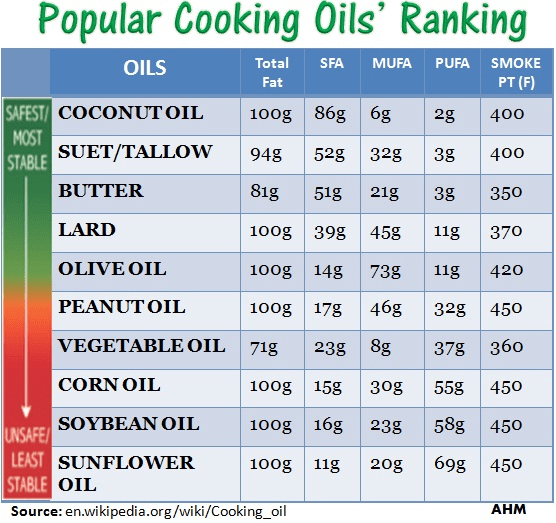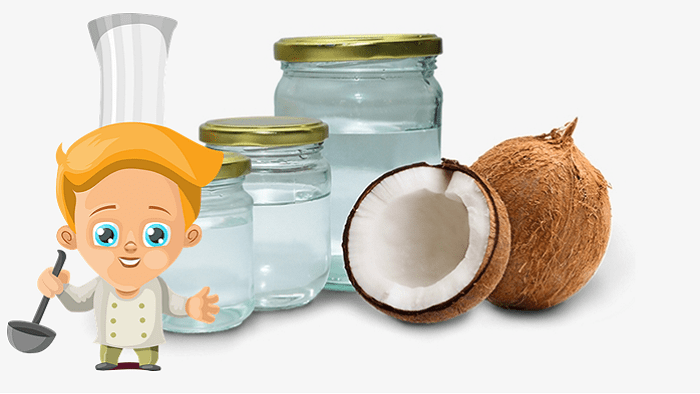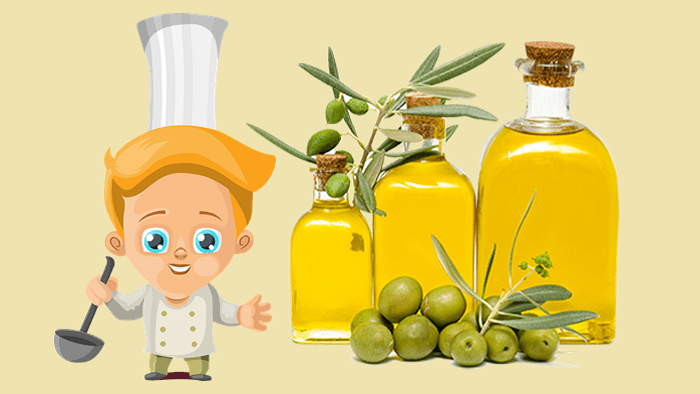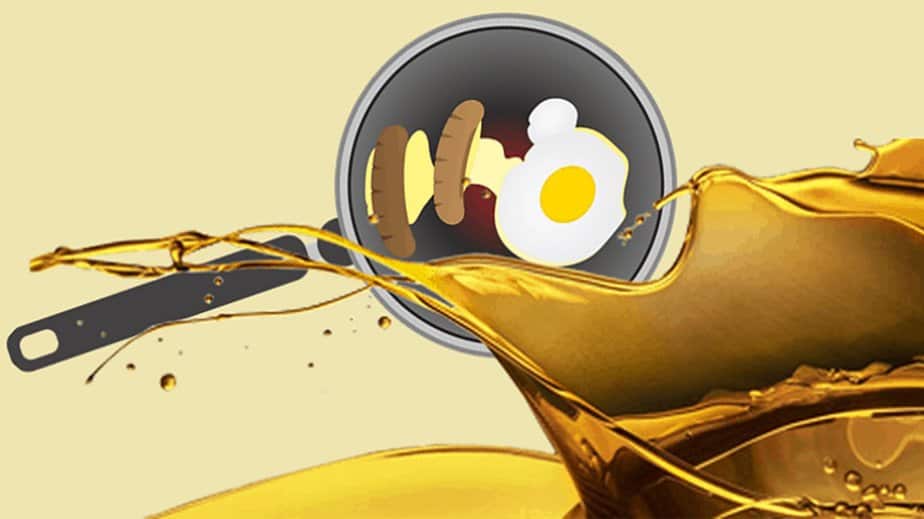I have been so confused about this for a long time… but finally, I found a few of the healthiest cooking oils.
As so many varieties of fats and oils are available for cooking, you need to analyze the pros and cons before adopting one or two of them as your choicest oil used for cooking.
In this article, we explore the best and worst oils for your health.
You should consider two points while choosing the healthy oil
- The oil must be good for the health
- The food stays healthy for long after it is cooked.
Importance Of Oils In Cooking
We will be deprived of many of the tastiest menus if we decide not to use cooking oils in the culinary process. Many of the most relished dishes all over the world are the ones prepared by frying or sautéing in oils.
We use oils not only for frying but also to marinate meats and vegetables, dress salads, and flavor dishes. Just to say, we cannot prepare sumptuous food without the oils.
There are many kinds of oil available to us. Most of the oils come from seeds and nuts of different plants, and the most popularly used among them are soybean, palm, and rapeseed/canola oils. These three account for 60% of total oils for cooking or baking used in the world.
Is Cooking Oil Unhealthy?
Many health-conscious people keep harping on that all cooking oils are unhealthy. There are also divided opinions on which is the healthiest cooking oil.
But the truth is very far from many of these arguments based on unfound prepositions.
Most cooking oils have a positive impact on health in several ways. Beneficial cooking oils provide healthy fats and fatty acids to the body.
Healthy fats improve the levels of good cholesterol in the blood. Most vegetable oils contain omega-3 and omega-6 essential fatty acids that reduce the risk of heart diseases and strokes and improve brain health. Some vegetable oils contain Vitamin E and Vitamin K.
All types of oils (fat) enable the body to absorb quickly fat-soluble vitamins (A, D, E, K) and nutrients.
Most cooking oils are good for health but become bad when the daily oil consumption exceeds the permissible amount. In our daily intake of calories, the oil should not be more than 30% percentage of the total calories consumed (maximum 95g for men and 70g for women).
How To Choose The Oils For Baking And Cooking
Fatty acids constitute a significant portion of all fats (oils & fat). The specific chemical structure of fatty acids in each of the oils decides their quality in cooking and their impact on health.
Healthier cooking oils and animal fats are classified as saturated, polyunsaturated, or monounsaturated according to the chemical structure of the fatty acids contained in them.
Saturated fats are considered to be ill-healthy, while polyunsaturated and monounsaturated fats are found to be healthier. However, when choosing a safe cooking oil to cook, it is very important to consider the oxidization and rancidity factors of the particular oil.
Most of the saturated fats/oils (previously considered bad) are scientifically proven to be a healthier choice than others that are polyunsaturated and monounsaturated.
If the oil is not resistant to oxidation, it is possible that by the time that particular oil begins to break down, many free radicals and carbon compounds will be formed. These free radicals and harmful compounds are dangerous to health in the long run.
healthy and nutritious cooking oil must have the qualities of stability, low oxidization, and long shelf life. The free radicals and bad compounds formed in the oil due to oxidation while heating is not good for consumption as they can give rise to many diseases over a period.
In the past, every diet guru thought monounsaturated fats were better than saturated fats. But recent studies do not agree with this idea.
It is found that saturated fats are more resistant to oxidation as they are made up of single-bond fatty acids. In contrast, monounsaturated fats have a double-bond molecular structure, and polyunsaturated fats have two or more bonds.
The highest chemical reactions and free-radical formation occur when fats with two or more molecular bonds are heated.
It is obvious here those oils with a lot of polyunsaturated fats are bad for consumption.
Choosing cooking oils with high oxidation resistance is important.
Let us see some of the best oils or fats we can safely use for cooking without compromising on the tastiness of the food.
Here we will see the best and worst oils for cooking that requires heating. The oils we could use to marinate meat, dress salad, and flavor dishes could depend on the quality and flavor of the oil.

Top 3 Best Cooking Oils (First Option)
Our top 3 best oils for cooking oils are coconut oil, butter, and olive oil.
1. Coconut Oil

No other oil is safer than coconut oil if you need to do high-heat cooking. Some may disregard coconut oil as it contains 90% saturated fat in it, but this oil is very resistant to heat and oxidation.
Another big advantage of this oil is its long shelf-life; it will not get spoiled for a year or two as it remains semi-solid at room temperature.
Some of the diet gurus had vehemently opposed coconut oil as an enemy of cholesterol and cardiovascular health. They got just got it incorrect!
Recent studies show the several health benefits of coconut oil. It improves the level of good cholesterol in the blood because of the Lauric acid present in it. This oil has medicinal benefits as it can eliminate dangerous bacteria and pathogens.
This oil helps a lot in improving metabolism. The foods prepared in coconut oil are more satiating and filling.
Discard the old school of thoughts on Coconut oil; all recent studies are for using coconut oil as an excellent oil for high-heat cooking.
Contrary to traditional diet plans, saturated fats are good and safe energy sources for human beings.
One significant point to be followed; pick and choose only 100% pure and organic coconut oil because we want to enjoy all its health benefits and authentic taste.
2. Butter

But we are warned by old-school dietitians; do not consume butter as it contains saturated fats (70%). Don’t take this warning so seriously.
Butter is bad only if you are using processed margarine which is bad. Pure dairy butter is deliciously tasty and good for health too.
The quality of butter is excellent, especially if it is sourced from cows reared on green pastures and moors. It has a high smoking point which is good for high-heat frying and stir-frying.
Butter is very nutritious with a lot of health benefits. It is a good source of Vitamin E, K2, and A. Linoleic Acid and Butyrate in the butter are good for fighting inflammation and reducing body fats.
For cooking purposes, it is better to use clarified butter (available in stores) in which sugar and protein are removed. Normal butter tends to get burned if it is used in high-heat cooking.
3. Olive Oil

Olive oil is sufficiently resistant to heat, and fewer free radicals are formed while heating.
Olive oil contains mostly monounsaturated fat (75%), and the rest is saturated fats (14%) and polyunsaturated fats (11%).
Extra virgin olive oil has several health benefits associated with it.
Most importantly, it improves cardiovascular health better than all the other oils.
For people who have cholesterol issues, this is a good choice. This oil helps improve HDL cholesterol levels in the blood and, at the same time, reduces LDL cholesterol.
When choosing olive oil, do not go for refined one. It is advantageous to use extra-virgin olive oil, which is rich in nutrients and has an authentic taste.
Olive oil is good as it can keep the food fresh for longer. Preferably, you must store this oil in cool and dry places to prevent the loss of quality.
4 Other Safe Oils (Second Option)
It may only be convenient for some to use Olive, Coconut, and Butter for cooking. Here is a list of oils you can use, but some have limitations and drawbacks.
4. Palm Oil
The cooking oil obtained from the fruit of oil palms is very popular in many countries. It is, in fact, the cheapest cooking oil of reasonably good quality.
This oil’s molecules’ fat structures are mostly saturated and monounsaturated, which is good for cooking.
This oil is also rich in Vitamin E and other nutrients. It also contains a high percentage of oleic acid which can help increase good cholesterol. However, The American Heart Association and American Diabetes Association caution people that this oil can give rise to cardiovascular diseases.
5. Bacon Grease
The animal fat obtained from bacon dripping is an excellent oil for cooking.
However, the quality of bacon fat may need improvement as some contain a lot of polyunsaturated fat if the animals were fed on grains.
It is healthy to use bacon fat containing unsaturated and monounsaturated fats, especially from animals that live and grow in natural green pastures and feed on green grass and plants.
6. Fish Oil
Fish oil, which is rich in Omega-3 fatty acids, is an excellent oil for cooking. Fish oil is good for improving cardiovascular health. It helps maintain the skin healthy and young and improves the memory and health of the brain.
7. Avocado Oil
The oil from avocado fruit is a healthy and nutritious cooking oil that is mostly monounsaturated in form. It has many similarities with olive oil, which can also be used just like olive oil. It’s an excellent choice for a recipe that needs to be cooked at high heat. Avocado oil has a higher smoke point which reaches up to 271 °C.
Avocado oil is excellent for the skin as it improves collagen production. This oil is also used for healing inflammations and wounds.
Not ‘So’ Healthy Cooking Oils
Flaxseed Oil
Flax seed oil is commonly known as the best source of Omega-3 from plants. It has a low smoke point. All pure vegans must have this oil to balance the bodily requirements of Omega-3.
Flax oil may prevent obesity and may reduce the cardiovascular risk associated with lifestyle diseases.
However, this oil contains a lot of polyunsaturated fats, so it is not recommended for cooking. It is better to use this oil for dressing salads and flavoring dishes.
Canola Oil
Canola oil is one of the most popularly used oil. Most people accept this oil as safe cooking oil, a refined form of rapeseed oil with no toxins.
This oil also contains mostly monounsaturated fat and is rich in Omega-3 and Omega-6 in a perfect ratio.
Canola oil is high in omega-3 fatty acid alpha-linolenic acid (ALA); more than any other oil except flaxseed oil.
Since it is highly processed, it cannot match the organic quality of coconut and olive oils. Most food processing involves using chemicals that can have hidden impacts on health.
It is healthy and wise to avoid using any heavily processed oils and food items.
Nut Oils
Almost all of the oils from nuts are polyunsaturated and vulnerable to oxidations.
They usually taste great and are very nutritious too. You could certainly use them in the culinary process except as cooking oils.
You can find a few varieties of nut oil that are low in polyunsaturated fat and fit for cooking.
Walnut oil is a great finishing oil to add flavor to recipes, sauces, and dressings.
Vegetable Oils
Vegetable oils are mostly obtained from vegetable seeds and industrial seeds. Usually, these oils are highly processed and refined to make them fit for cooking.
It is always safer to avoid all processed oils as a thumb rule.
Many recent studies also point to the side effects of vegetable oils on cardiovascular health.
Refined oils recommended for deep-frying are “high oleic” safflower, sunflower, and peanut oil. Toasted sesame oil comes to use as a seasoning in sauces, soups, and pickles.
In cooking, it’s better to avoid these oils:
- Soybean Oil
- Rice Bran Oil
- Cottonseed Oil
- Rapeseed Oil
- Sunflower Oil
- Sesame Oil
- Grapeseed Oil
- Corn Oil
- Safflower Oil
Storing And Preserving Oils
All cooking oils, as they are rich in fat contents, are prone to becoming rancid fast. Unsaturated oils are more prone to becoming rancid faster.
The oils must always be preserved in cool and shady places. Always keep them in tightly closed bottles or jars as they can oxidize quickly when exposed to light, oxygen, and above room temperature conditions.
If you live in humid and hot tropical climates, preserving the oils in the refrigerator (except the virgin olive oils) is better. Look at the manufacturers’ instruction label on how to preserve the oil and follow the same.
It is always best to store the oils in dark glass bottles or ceramic and porcelain vessels.
Dispose of the oils that have crossed the expiry date; most of the oils become rancid after six months to one year. Try to dispose of the rancid oil by burning it in a fire, or the drainages and water streams will become polluted.
